This article explain about magazines, like types of flyers, size, design, templates, printing, benefits, and tips for effective magazines.
Have you ever picked up a magazine at the doctor’s office, seen one in the grocery store, or read one online? Magazines are a big part of our media world, covering everything from fashion to science to hobbies. They are packed with interesting articles, eye-catching photos, and expert advice, making them a great way to learn about new topics or stay updated on your favorite interests. Whether in print or digital form, magazines continue to be a popular and influential source of information and entertainment.
Types of Magazines
- Consumer Magazines: These are the ones you see in stores. They cover topics like fashion, lifestyle, entertainment, and more. Examples include “Vogue,” “Time,” and “National Geographic.”
- Trade Magazines: Trade magazines are aimed at professionals in specific industries. For example, “Variety” is for the entertainment industry, while “Architectural Digest” is for architecture professionals.
- Literary Magazines: Literary magazines publish short stories, poems, and essays. They are a great place for writers to share their work and for readers to find new authors.
- Academic Journals: These are scholarly publications with research articles, usually written by experts in a particular field. They’re often used by students and professionals for research.
- Special Interest Magazines: These magazines focus on specific hobbies or interests, like “Runner’s World” for running enthusiasts or “Guitar World” for guitar players.
Key Sections of a Magazine
- Cover Page: The front cover of a magazine usually features a striking image, the magazine’s title, issue date, and key headlines or teasers to attract readers.
- Table of Contents: This section provides an overview of the magazine’s content, including article titles and their corresponding page numbers.
- Editorial: A message from the editor, offering insights or commentary on the magazine’s theme or significant topics covered in the issue.
- Feature Articles: In-depth stories or essays on a variety of topics, often the highlight of the magazine. These can cover anything from interviews and investigative journalism to opinion pieces and reviews.
- Regular Columns: Recurring segments written by regular contributors, providing commentary, advice, or updates on specific topics such as health, technology, or fashion.
- News and Updates: Shorter articles or briefs on current events, trends, and relevant updates within the magazine’s focus area.
- Profiles and Interviews: Articles featuring prominent figures, their stories, interviews, and personal insights.
- Reviews and Critiques: Evaluations of products, books, movies, restaurants, or other relevant items, offering the magazine’s perspective and recommendations.
- Advertisements: Paid content from advertisers, which helps fund the magazine. These can be found throughout the magazine and are often tailored to the magazine’s audience.
- Letters to the Editor: A section where readers can share their thoughts, feedback, and opinions about previous issues or current topics.
- Back Page/Inside Back Cover: Often used for additional advertisements, editorial notes, or teasers for the next issue.
- Credits and Masthead: Information about the magazine’s staff, contributors, and contact details. This is usually found towards the end of the magazine.
Designing a Magazine
Designing a magazine involves several key steps to create a visually appealing and engaging publication. Here’s a detailed look at the process:
1. Define the Concept and Audience
- Purpose: Determine the magazine’s goal, such as entertainment, education, or industry news.
- Target Audience: Identify who the readers will be, considering demographics and interests.
2. Create a Content Plan
- Theme: Decide on a central theme or focus for each issue.
- Articles and Features: Plan the types and number of articles, columns, interviews, and features.
3. Develop a Visual Style
- Branding: Establish a consistent visual identity that reflects the magazine’s brand.
- Color Scheme: Choose colors that align with the theme and audience.
- Typography: Select fonts for headings, subheadings, and body text to ensure readability and visual harmony.
4. Design the Layout
- Grid System: Use a grid layout to maintain consistency and structure.
- Cover Design: Create an eye-catching cover with a strong focal point and teaser headlines.
- Interior Pages: Design templates for different types of content, such as feature articles, regular columns, and news briefs.
5. Incorporate Visual Elements
- Images and Graphics: Use high-quality photos, illustrations, and infographics to enhance the content.
- White Space: Strategically use white space to prevent overcrowding and improve readability.
6. Focus on Usability
- Navigation: Ensure the magazine is easy to navigate with clear section divisions and a detailed table of contents.
- Interactivity: For digital magazines, incorporate interactive elements like hyperlinks, videos, and animations.
7. Use Design Software
- Adobe InDesign: A popular tool for creating professional magazine layouts.
- Canva: An accessible option for creating visually appealing designs with user-friendly templates.
- Scribus: An open-source desktop publishing software suitable for magazine design.
8. Review and Edit
- Proofreading: Check for spelling, grammar, and factual errors.
- Feedback: Gather input from editors and designers to refine the layout and content.
9. Print and Distribution
- Print Specifications: Choose the right paper quality, binding, and print settings.
- Distribution Channels: Plan how the magazine will be distributed, whether in print, online, or both.
By following these steps, you can create a magazine that is not only visually appealing but also engaging and informative for your readers.
Magazine Design Size
Choosing the right design size for a magazine is crucial for both aesthetics and functionality. Here are the common sizes and their considerations:
Standard Magazine Sizes
- US Letter (8.5″ x 11″)
- Description: The most common magazine size in the US.
- Uses: Suitable for a wide range of content, from fashion to lifestyle and business magazines.
- Benefits: Ample space for images and text, versatile, and widely accepted by printers.
- A4 (8.27″ x 11.69″)
- Description: The standard size for magazines in Europe.
- Uses: Commonly used for international publications and corporate magazines.
- Benefits: Slightly taller than US Letter, offering a different aesthetic appeal.
- Digest (5.5″ x 8.5″)
- Description: Smaller, more compact size.
- Uses: Ideal for niche magazines, booklets, and guides.
- Benefits: Portable, cost-effective for printing, and easier to handle.
- Tabloid (11″ x 17″)
- Description: Larger than standard magazine sizes.
- Uses: Used for newspapers, catalogs, and magazines that require large images and more visual impact.
- Benefits: Greater visual impact, more space for content.
Choosing the right size for your magazine involves balancing aesthetics, functionality, and costs to create an effective and appealing publication.
Software to Create a Magazine
Creating a professional magazine requires the right tools. Here are some popular software options to help you design and produce high-quality magazines:
1. Adobe InDesign
- Description: Industry-standard software for magazine design.
- Features: Advanced layout options, typography tools, and integration with other Adobe products.
- Pros: Professional-grade tools, widely used by designers, extensive tutorials available.
- Cons: Steep learning curve, subscription-based pricing.
2. Canva
- Description: User-friendly, web-based design tool.
- Features: Drag-and-drop interface, customizable templates, and a vast library of graphics and fonts.
- Pros: Easy to use, affordable, great for beginners.
- Cons: Limited advanced design features compared to professional software.
3. Scribus
- Description: Open-source desktop publishing software.
- Features: Professional page layout, pre-press features, and support for various file formats.
- Pros: Free, powerful for an open-source tool, suitable for professional use.
- Cons: Less intuitive interface, limited support and tutorials.
4. Lucidpress
- Description: Online design and layout software.
- Features: Collaborative tools, templates, and easy-to-use interface.
- Pros: Cloud-based, great for team collaboration, easy to learn.
- Cons: Requires internet connection, subscription-based.
5. Affinity Publisher
- Description: Professional desktop publishing software.
- Features: Advanced layout tools, typography controls, and seamless integration with Affinity Photo and Designer.
- Pros: One-time purchase, powerful features, growing user community.
- Cons: Relatively new, so fewer tutorials and community support.
These tools offer a range of features to suit different needs and skill levels, from beginner-friendly options like Canva to professional-grade software like Adobe InDesign. Choose the one that best fits your project requirements and budget.
Magazine Templates
Magazine templates are pre-designed layouts that make creating professional-looking magazines easier and faster. They offer a structured framework with placeholders for text, images, and other design elements. Here are some benefits and examples of magazine templates:
Benefits of Using Magazine Templates
- Time-Saving: Templates save time because you don’t have to start from scratch.
- Cost-Effective: They’re usually cheaper than hiring a designer for a custom layout.
- Professional Appearance: High-quality templates make your magazine look polished and professional.
- Ease of Use: Templates are easy to customize with drag-and-drop features.
- Consistency: Using the same template ensures your magazine has a uniform look.
- Inspiration: Templates provide ideas for layout and design.
- Efficiency: They streamline the magazine creation process.
Popular Sources for Magazine Templates
- Adobe InDesign: Professional software with many templates.
- Canva: Easy-to-use templates for various styles.
- Template Websites: Sites like Envato Elements and Template.net offer numerous options.
Conclusion
Magazines are a powerful tool for communication, education, and entertainment. By understanding their history, types, design elements, and production process, you can appreciate the effort that goes into creating them. Whether in print or digital form, magazines continue to play an important role in our media landscape.
Image source: Woman Cosmetics Makeup Beauty Feminine










